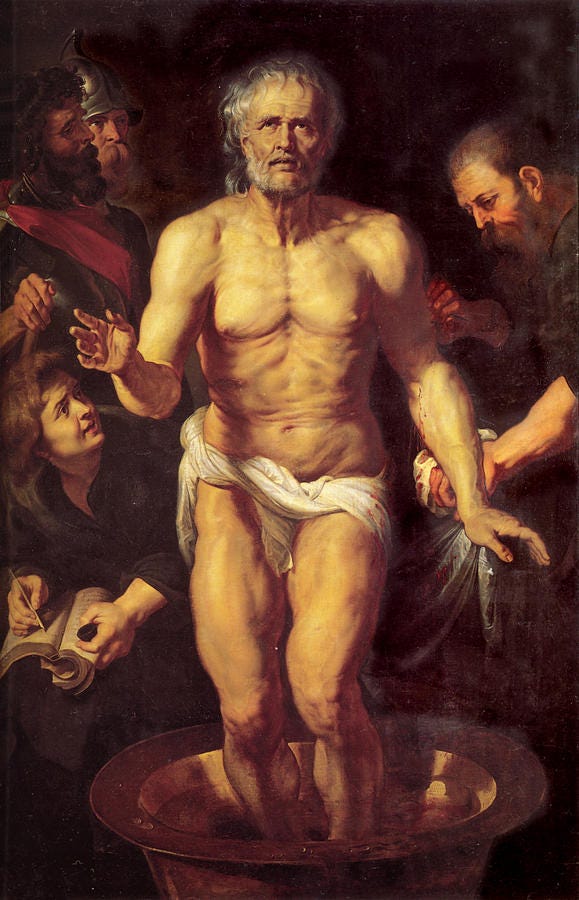Seneca’s Invisible Chains and Why True Freedom is an Inside Job?
Our modern idea of freedom is a dangerous illusion. We celebrate the absence of external constraints, believing liberty is found in boundless choice. Yet, the Roman Stoic Seneca revealed a deeper, more insidious form of bondage: slavery to our own impulses, fears, and the relentless pull of external validation. This article will expose these invisible chains and provide a practical framework, drawn from ancient wisdom, to reclaim the profound inner sovereignty that defines authentic freedom.
The Myth of Unfettered Freedom
I observe a peculiar paradox in our contemporary society: we champion freedom as our highest ideal, yet many of us feel increasingly constrained, anxious, and unfulfilled. Our popular conception of freedom is largely external—the absence of overt governmental control, the liberty to choose from an endless array of consumer goods, the boundless opportunities presented by the digital age. We’ve been taught that the fewer the external barriers, the freer we become. But is this truly freedom, or merely a sophisticated form of bondage?
This narrow definition misses a crucial dimension, one that ancient philosophers understood intimately. To them, true liberty wasn’t just about what external forces couldn’t do to you, but what you could do for yourself. It was about sovereignty over one’s own inner world, a mastery that remains profoundly elusive for many in our hyper-stimulated, gratification-driven culture. Without this inner freedom, we might possess all the external liberties imaginable, yet remain prisoners of our own making.
Seneca’s Radical Insight: Inner Sovereignty
The Roman Stoic philosopher Seneca the Younger, in his “Letters from a Stoic” and other works, repeatedly hammered home a radical truth: freedom is not granted, but earned. It is a state of being, an internal disposition, rather than a political condition. He posited that the greatest chains are not forged by tyrants or laws, but by our own unruly desires, unchecked emotions, and relentless pursuit of external approval. As he eloquently put it:
No man is free who is a slave to his body.
– Seneca the Younger
This isn’t a call to asceticism for its own sake, but an urgent reminder that if our happiness, peace, or sense of worth depends on external factors—be it wealth, status, pleasure, or the opinions of others—then we are fundamentally unfree. Each external attachment becomes a leash, tugging us this way and that, dictating our moods and decisions. Seneca’s genius lay in diagnosing this inner slavery and prescribing a path to genuine liberation: self-control.
The Tyranny Within: Our Invisible Chains
Let’s be honest with ourselves: how often do we truly act according to our highest values, rather than yielding to immediate gratification, societal pressure, or deep-seated fears? We procrastinate on important tasks for trivial distractions, scroll endlessly through social media when we should be working or resting, buy things we don’t need to impress people we barely like. These aren’t acts of freedom; they are symptoms of a profound lack of self-possession. The modern addiction to comfort and instant gratification has forged invisible chains around our very souls, binding us more effectively than any physical restraint.
Consider how easily our moods are swayed by a rude comment, a slight on social media, or a political headline. We become reactive, our inner peace outsourced to the whims of the world. This is the essence of internal bondage. We are not just slaves to specific vices, but to the very idea that our well-being is primarily determined by external circumstances. The first step towards freedom is to recognize these insidious chains and acknowledge their grip on us.
The Five Pillars of Inner Emancipation: A Stoic Framework
Reclaiming true freedom is an active process, a continuous wrestling match against our lower impulses and the external noise. Drawing from Seneca and the Stoic tradition, I’ve distilled a practical five-pillar framework to cultivate the self-control necessary for genuine inner sovereignty. This is your toolkit to break the invisible chains.
Pillar One: Unmask Your Masters (Self-Awareness)
Before you can fight your chains, you must see them. Dedicate time each day to honest self-reflection. What triggers your anger, fear, envy, or compulsive behaviors? What external validations do you crave most? Keep a journal, noting specific instances where you felt compelled rather than free. Ask yourself: “Who or what truly controls my reactions in this moment?” This isn’t about judgment, but clear-eyed observation.
Keep reading with a 7-day free trial
Subscribe to The Third Citizen to keep reading this post and get 7 days of free access to the full post archives.



